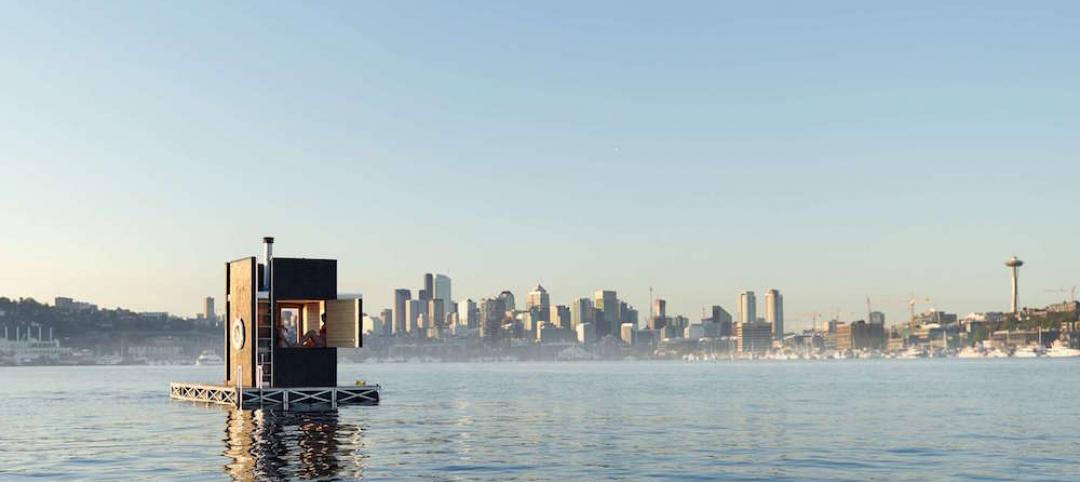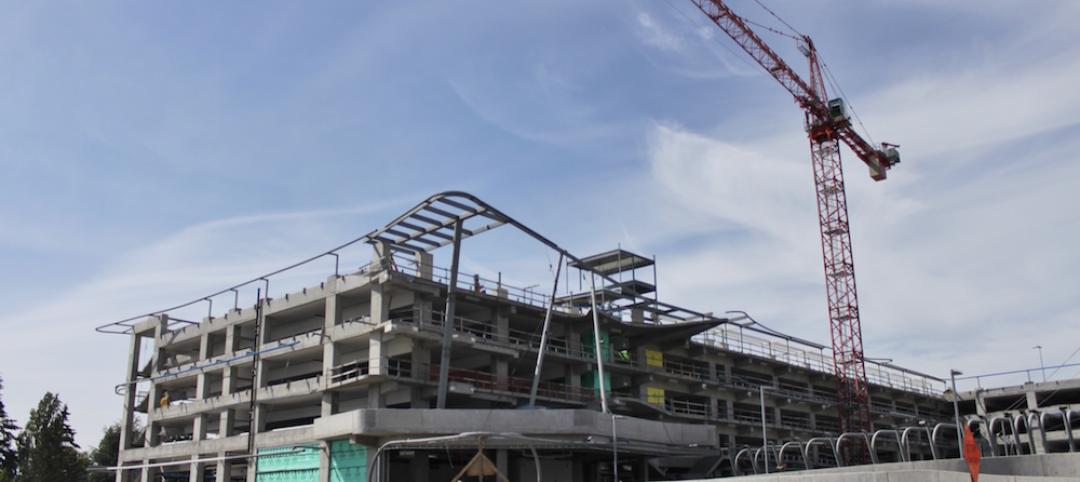On zero-energy cities: The idea of a zero-energy city is a subject I’ve been interested in most of my career, working in indigenous areas like Guatemala and the Middle East, looking for clues about the design of buildings in their cultural and historical fabric. For the last four years, we’ve been looking at how to relate buildings to the natural forces that are available to us—geothermal, wind, solar, building orientation, and so on.
Sears Tower as guidepost: In 2005, while Gordon Gill and I were still at SOM, we started to look at the need to not only reduce buildings’ reliance on energy, but also to absorb the energy and use the latent environment to its greatest advantage. The Sears Tower [now Willis Tower] has 10,000 panes of single-glaze glass, and each creates as much carbon as one SUV. So we looked into completely replacing the exterior wall, redoing the insulation panels, updating the mechanical systems, reducing the amount of artificial light in the inner space, using dimmer systems, greening the nine roofs, using solar provide hot water, and so on. The potential savings would be 68 million kWh a year, which translates to five million fewer miles of driving, or electricity for 2,500 homes. We concluded that we could save 80% of the base energy of the building and 50% of the tenant energy use for the building.
Decarbonizing Chicago: The Sears Tower got us thinking about the 2030 Challenge, the BOMA 7-Point Challenge, and the Chicago Climate Action Plan: What would happen if we analyzed Chicago’s Loop to meet those goals? Over the last year, our firm has conducted an extensive study, a Chicago Central Area Decarbonization Plan, to see what it would take to get a carbon-free environment by 2030. We looked at a 460-acre section of the Loop that represents 9% of the city’s emissions, 3.9 million tons of CO2e a year, to see how to get an 80% reduction by 2020 and eliminate 3.2 million tons of CO2e a year.
By taking every building in the study area, all 550, and applying what we did in the Sears Tower, you get about one-third of the way toward the 2030 Challenge. Then, if you change the “urban matrix” of the buildings in the Loop from essentially 100% office use to 50% office and 50% residential, that gets you two-thirds of the way there. And through means like smart infrastructure, increased pedestrian traffic, district cooling, reducing energy in water and waste, and community education—when you do all that, you still have about 20% of the way to go, and that 20% has to come from renewable power sources to achieve a total reduction of carbon.
New technology, new philosophy: The old technology, old philosophy is having a central power plant and transmitting the power from the central plant to each building in the city. The problem is that you’re only 40-50% efficient at the source, and you’re losing 30% more in transmission, so you’re throwing away 70-80% of the power. Using new technology with wind and solar farms still relies on transmitting energy to the city. The new technology, new philosophy is to make as much power on the site as possible. Then you can shave the peak period for all users and reduce the total number of power plants. And you don’t need the grid: every building becomes a power source.
QUESTIONS FROM THE IIT AUDIENCE
Does your plan use projections of future improvements in technology?
ADS: The Chicago decarbonization plan uses existing technology; we don’t rely on technology that doesn’t exist. As people hear about what we’re doing, new technology will become part of our daily lives. We don’t know if some of those things will work, so you can’t rely on unknown technology in the future.
What about the embodied energy of materials?
ADS: The best way you can save energy is to take something old and renew it. You have to tackle it building by building, district by district. The study showed that for $65 a square foot you could bring these buildings up to state of the art, vs. $250 a square foot to replace them.
How will you store energy for when it’s actually needed?
ADS: You have to have storage facilities to store that power, whether that’s a battery or limestone caves. This is a key area of investigation, and it’s going to take a clever solution to do this on an economical basis.
How likely is it that your plan could be implemented?
ADS: That’s a big question mark. In New York City, building owners have to do some of the things we’re talking about. This is a seed. You throw it out there.
Would the residential units be too expensive for low-income groups?
ADS: In the Loop, retrofitting the pre-1950s buildings could give you opportunity to do that, where units would be cost accessible. In the ’80s, we took a lot of abandoned manufacturing buildings and converted them into residential lofts that were quite affordable.
How do you counteract the public’s reaction to high density?
ADS: People don’t want their views blocked, and that’s where a master plan comes in, and zoning densities. Wacker’s “Manual of the Plan of Chicago” was used for 15 years after the Burnham Plan of 1909, to teach every public school student what the plan meant. We’re proposing a similar manual that creates strategies for a carbon-free environment.
Related Stories
Green | Jul 1, 2016
Perkins Eastman pledges to use EDGE green building system for five upcoming international projects
The firm will partner with the International Finance Corporation to promote sustainable building in emerging markets like India and China.
Healthcare Facilities | Jul 1, 2016
AIA releases summary of the 2016 Design and Health Research Consortium
Consortium members discussed how architects, designers, and health professionals can best apply design and health research in their communities.
Architects | Jun 30, 2016
The year's best small projects include a floating sauna, dental trailer, and smocked porch
AIA chose the 2016 recipients of the Small Project Awards. Every entry cost less than $1.5 million to build, with one as low as $900.
Architects | Jun 29, 2016
AIA: Healthy demand for all building types signaled in Architecture Billings Index
Recent client interest could signal resurgence for institutional market. May's ABI score was the highest mark in nearly a year.
Architects | Jun 28, 2016
5 easy ways architects can increase their profits
Whitehorn Financial Managing Principal Steve Whitehorn offers effective ways to recoup lost revenue, including a few strategies that capitalize on recent changes to the federal tax code.
AEC Tech | Jun 27, 2016
If ‘only the paranoid survive,’ what does it take to thrive?
“Sooner or later, something fundamental in your business world will change.” The late Andrew Grove (1936-2016), Co-founder of tech giant Intel Corp., lived by these words.
Architects | Jun 15, 2016
Design Thinking makes its way into Yale School of Management
The school will introduce Design Observer co-founders Jessica Helfand and Michael Bierut as faculty.
Retail Centers | Jun 14, 2016
Zaha Hadid and Gensler among finalists for Sunset Strip billboard design competition
The concepts are curvy, sleek, and multidimensional, and feature sharp digital displays.
Movers+Shapers | Jun 14, 2016
VERTICAL INTEGRATOR: How Brooklyn’s Alloy LLC evolved from an architecture firm into a full-fledged development company
Led by an ambitious President and a CEO with deep pockets, Alloy LLC's six entities control the entire development process: real estate development, design, construction, brokerage, property management, and community development.
Office Buildings | Jun 14, 2016
Let's not forget introverts when it comes to workplace design
Recent design trends favor extroverts who enjoy collaboration. HDR's Lynn Mignola says that designers need to accommodate introverts, people who recharge with solitude, as well.
















